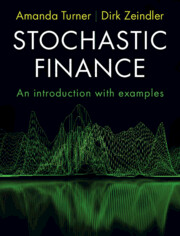Refine search
Actions for selected content:
36807 results in Cambridge Textbooks
Chapter 5 - Plans for implementing effective partnerships
-
- Book:
- Partnerships with Families and Communities
- Published online:
- 21 February 2023
- Print publication:
- 17 February 2023, pp 91-105
-
- Chapter
- Export citation
About the authors
-
- Book:
- Partnerships with Families and Communities
- Published online:
- 21 February 2023
- Print publication:
- 17 February 2023, pp viii-viii
-
- Chapter
- Export citation
Chapter 9 - Leading effective partnerships
-
- Book:
- Partnerships with Families and Communities
- Published online:
- 21 February 2023
- Print publication:
- 17 February 2023, pp 153-189
-
- Chapter
- Export citation
Chapter 3 - Exploring models of partnerships
-
- Book:
- Partnerships with Families and Communities
- Published online:
- 21 February 2023
- Print publication:
- 17 February 2023, pp 48-72
-
- Chapter
- Export citation
Acknowledgement of Country
-
- Book:
- Partnerships with Families and Communities
- Published online:
- 21 February 2023
- Print publication:
- 17 February 2023, pp i-ii
-
- Chapter
- Export citation
Chapter 8 - Tools for evaluation of partnership work
-
- Book:
- Partnerships with Families and Communities
- Published online:
- 21 February 2023
- Print publication:
- 17 February 2023, pp 137-152
-
- Chapter
- Export citation
Preface
-
- Book:
- Partnerships with Families and Communities
- Published online:
- 21 February 2023
- Print publication:
- 17 February 2023, pp ix-x
-
- Chapter
- Export citation
Acknowledgements
-
- Book:
- Partnerships with Families and Communities
- Published online:
- 21 February 2023
- Print publication:
- 17 February 2023, pp xi-xii
-
- Chapter
- Export citation
Index
-
- Book:
- Partnerships with Families and Communities
- Published online:
- 21 February 2023
- Print publication:
- 17 February 2023, pp 203-210
-
- Chapter
- Export citation
References
-
- Book:
- Partnerships with Families and Communities
- Published online:
- 21 February 2023
- Print publication:
- 17 February 2023, pp 190-202
-
- Chapter
- Export citation
Chapter 2 - Diversity in partnership work
-
- Book:
- Partnerships with Families and Communities
- Published online:
- 21 February 2023
- Print publication:
- 17 February 2023, pp 28-47
-
- Chapter
- Export citation
Chapter 4 - Skills for engagement in effective partnership work
-
- Book:
- Partnerships with Families and Communities
- Published online:
- 21 February 2023
- Print publication:
- 17 February 2023, pp 73-90
-
- Chapter
- Export citation
Copyright page
-
- Book:
- Partnerships with Families and Communities
- Published online:
- 21 February 2023
- Print publication:
- 17 February 2023, pp iv-iv
-
- Chapter
- Export citation
Chapter 7 - Reflective practice in partnership work
-
- Book:
- Partnerships with Families and Communities
- Published online:
- 21 February 2023
- Print publication:
- 17 February 2023, pp 120-136
-
- Chapter
- Export citation
Chapter 6 - Strategies and challenges for implementing partnerships
-
- Book:
- Partnerships with Families and Communities
- Published online:
- 21 February 2023
- Print publication:
- 17 February 2023, pp 106-119
-
- Chapter
- Export citation

Stochastic Finance
- An Introduction with Examples
-
- Published online:
- 16 February 2023
- Print publication:
- 09 February 2023
-
- Textbook
- Export citation
4 - Unidirectional Transport: Cartesian Co-ordinates
-
- Book:
- Fundamentals of Transport Processes with Applications
- Published online:
- 28 February 2025
- Print publication:
- 16 February 2023, pp 137-230
-
- Chapter
- Export citation
Dedication
-
- Book:
- Fundamentals of Transport Processes with Applications
- Published online:
- 28 February 2025
- Print publication:
- 16 February 2023, pp v-vi
-
- Chapter
- Export citation
Frontmatter
-
- Book:
- Calculus
- Published online:
- 31 December 2024
- Print publication:
- 16 February 2023, pp i-iv
-
- Chapter
- Export citation
8 - Diffusion Equation
-
- Book:
- Fundamentals of Transport Processes with Applications
- Published online:
- 28 February 2025
- Print publication:
- 16 February 2023, pp 373-420
-
- Chapter
- Export citation
